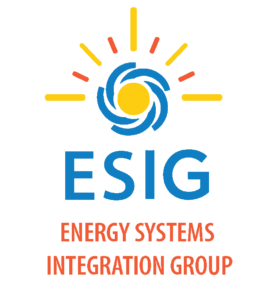I think wind and solar power plants are finally coming into their own. What do I mean by a power plant? I mean a plant that can accept dispatch signals from the system operator, participate in AGC, ride through system voltage and frequency disturbances, and supply the full range of ancillary services required for system reliability that we have come to expect from any power plant on the system, i.e. automatic voltage control, governor response, and inertial response. For those of you who follow NERC activities, you will recognize the ancillary services as a part of the NERC Essential Reliability Services Task Force (ERSTF) initiative. The essential reliability services fall into two buckets; voltage control and frequency control.
Many people have expressed concern that the system will be less reliable in the future, because VG plants are not able to supply the full range of ancillary services that fossil plants do. Some even go so far as to say that fossil plants inherently provide essential reliability services, because they have synchronous machines. Let us examine these arguments one step at a time.
First, let’s take a look at the ancillary services supplied by a modern wind or solar plant. For a wind plant, we will be talking about a plant with Type 3 (doubly fed asynchronous) or Type 4 (full converter output) machines. Any modern plant with Type 3 or Type 4 machines comes with an automatic voltage regulator on it, just as a synchronous machine does. There is no issue about what a plant with an AVR can do. Except that a modern wind or solar plant can continue to provide VAr support to the system, even when the plant is not operating. As for inertial response and governor response, a synchronous inertial response is provided by a synchronous machine, and it can be emulated by a wind plant with a fast frequency (synthetic inertia) response. This is the only inherent essential reliability service provided by a synchronous machine. As for governor response, a wind plant has an electronic governor that can provide a governor response equal to or better than any synchronous machine. The only issue here is that the frequency response features cost money to activate, and most jurisdictions do not require them in their interconnection requirements, so most developers do not purchase or provide them.
There is nothing inherent about voltage regulation or frequency response in a fossil power plant or a VG power plant. If you take the AVR and governor off either plant, you will get neither response. Put on an AVR and a governor, and you will get them from both. If you apply a fast frequency control on a wind plant, you can get a synthetic inertia response which emulates the synchronous inertia response of a synchronous machine. This is a very positive story to come out of the wind and solar industry over the past 5 years. Voltage regulation is being done on all new plants now, and electronic governors are available, even though they are not required in most jurisdictions. However, both fast frequency response (synthetic inertia) and governor response are in operation in North America, with the fast frequency response on wind plants in Hydro Quebec, and governor control on wind plants in ERCOT and several other jurisdictions.
Disturbance ride-through for voltage and frequency is another critical reliability service which must be provided to maintain system reliability. Wind power plants are required by FERC Order 661-A to ride through a normally cleared three phase system fault. NERC PRC-024-1 is a relay standard which only requires plants to have their primary protective relays set so that they do not cause the plant to trip within the “no trip zone” of voltage and frequency curves. It is not a performance standard which requires the plants to actually ride through the disturbance. The wind plant is held to a higher standard, and is fully capable of meeting it.
I would propose that there is a simple solution to the concerns for loss of inertial and frequency response as more coal plants are retired and more VG plants are installed. Tighten up the interconnection requirements and make sure that any new power plant connected to the power system has a voltage regulator and a governor, is capable of providing a fast frequency response, and can ride through voltage and frequency disturbances. The reliability of the bulk power system requires no less.
Charlie Smith
Executive Director, UVIG

Leave a Reply